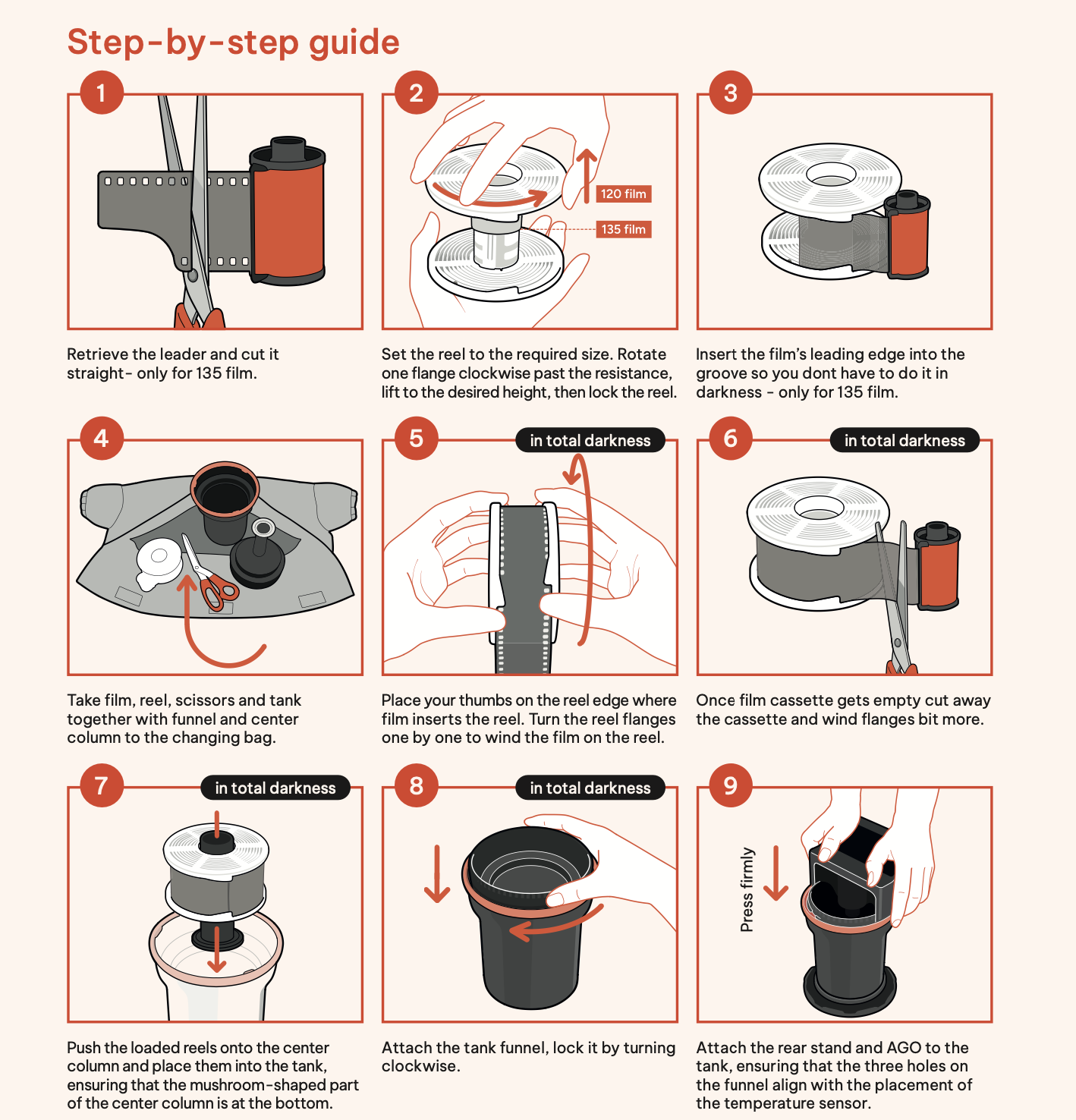Developing your first C-41 film
How to Develop Color Film at Home
Developing color film using the C-41 process at home is more challenging than developing black-and-white film, as it requires higher chemical temperatures. However, with the right tools, materials, and patience, it is definitely doable. Here’s a guide to help you develop your color film with a C-41 starter kit:
What You Need
- Film Developing Tank – Holds reels inside and allows chemicals to be poured in and out.
- Reels – Used to load your film. Ensure they’re suitable for your format (35mm, 120, 4×5, etc.).
- Darkroom or Changing Bag – To load film in complete darkness.
- Thermometer – For accurate chemical temperatures.
- Film Clips – For drying film.
- Measuring Cylinders – For mixing chemicals.
- Scissors – Needed for 35mm film trimming in the dark.
- C-41 Chemicals – Developer, Blix, and Stabilizer.
- Storage Bottles – For storing mixed chemistry.
- Distilled Water (optional) – If your tap water is mineral-rich.
- AGO Film Processor (optional) – Maintains temperature automatically.
- Sous-Vide Heater (optional) – Or use hot water in a sink.
- Timer – Not required with AGO.
Click here to view step-by-step as images


Step-by-Step Process
- Load the Film: In complete darkness, load film onto the reel and place inside the tank.
- Prepare the Chemicals: Mix according to instructions. Heat to ~38°C (100°F), ideally 2°C higher to offset cooling.
- Developing: Follow your kit’s times and agitation instructions.
- Drying: Hang film in a dust-free space until fully dry.
- Digitize or Print: Scan negatives or make prints.
- Cut & Store: Cut into strips and place in archival sleeves.
- Store Chemicals: Keep air out of bottles to extend life.
Tips
- Volume Needed: Paterson tank: 290ml for 35mm, 500ml for 120.
- Fresh Chemicals: C-41 developer loses potency quickly; always use fresh.
- Chemical Reuse: Track rolls and adjust times if reusing.
- Temperature Control: Maintain ~38°C; AGO adjusts automatically.
- Agitation: 10 seconds initial, then 4 inversions every 30 seconds.
Troubleshooting
- Color Shifts: Incorrect temperature or exhausted chemicals.
- Streaks: Inconsistent agitation.
- Dense Negatives: Overdevelopment or wrong chemical strength.
Conclusion
With the right materials and attention to detail, developing C-41 film at home is straightforward. Keep temperatures accurate, agitate consistently, and handle film gently for best results.
